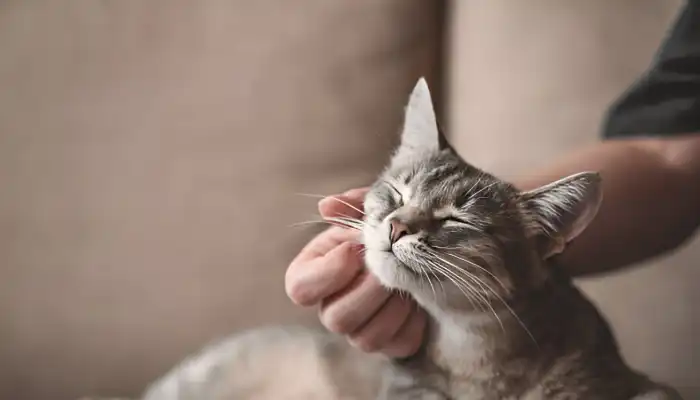Have you ever thought about how to speak cat translator to fully understand all your cat’s moods? Cats possess their own unique way of communicating, be it requesting for food at five in the morning or chattering at birds while they are perched outside. While we do not have a working Dr. Dolittle device yet, the wonders of AI technology and behavioral science is making strides towards deciphering feline communication.
In this article, we will cover everything regarding deciphering meows and the advanced technologies that can render you a genuine cat sounds translator whisperer. Let’s get started!

How to Speak Cat Translator: Is It Even Possible?
How to speak cat translator? The idea of a cat-to-human translator sounds like sci-fi, but researchers and pet tech companies are making strides. While we can’t yet “speak cat” fluently, understanding the basics of feline communication can help you interpret your cat’s needs more effectively. Here’s what you need to know:
Cats “talk” through three main channels:
- Vocalizations (meows, purrs, hisses).
- Body language (tail flicks, ear positions).
- Scent marking (cheek rubs, scratching).
By combining these signals, cats express emotions, desires, and warnings. For example, a slow blink means “I trust you,” while a puffed-up tail screams “Back off!” Understanding how to speak cat translator means observing these cues carefully.
How Do Cats Communicate?
Before relying on gadgets, sharpen your natural cat-translating skills. Here’s how to start:
| Meow Type | Possible Meaning | Context Clues |
|---|---|---|
| Short, high-pitched | “Hello!” or “Feed me!” | Rubs against legs, follows you |
| Long, drawn-out | “I’m annoyed!” | Stares at empty food bowl |
| Chirp or trill | “Follow me!” | Points toward a toy or door |
| Low growl | “I’m scared/angry!” | Hissing, arched back |
Pro Tip: Pay attention to pitch and repetition. A rapid-fire meow barrage often means urgency (e.g., “OPEN THIS DOOR NOW!”). Learning how to speak cat translator means listening closely!
Reading Cat Body Language Like a Pro
Cats are subtle, but their bodies don’t lie:
- Tail straight up: Happy/confident.
- Tail tucked: Fearful/submissive.
- Ears forward: Curious/engaged.
- Ears flattened: Agitated/defensive.
Role of Scent and Context
Cats leave pheromone-packed messages via cheek rubs and scratching. If your cat obsessively scratches your couch, they’re not being spiteful—they’re marking their territory!
By tuning into your cat’s vocal, physical, and scent cues, you’ll become fluent in feline communication and strengthen your bond like never before!

How Can Tech Translate Cat Talk?
Curious about what your cat is trying to say? With a how to speak cat translator, technology is making it easier than ever to decode feline communication!
AI-Powered Cat Translator Apps
Cat translator app like MeowTalk and PetPace use machine learning to analyze vocal patterns. Simply record your cat’s meow, and the app suggests translations like “I’m hungry” or “Play with me!”
How It Works:
- Records vocalizations.
- Matches sounds to a database of labeled meows.
- Provides real-time “translations.”
Limitations: Accuracy varies since cats don’t have a universal “language.” A meow that means “hungry” for one cat might mean “lonely” for another. However, how to speak cat translator apps are continuously improving.
Wearable Tech for Cats
Devices like Temptations Lab’s smart collar track:
- Vocalizations.
- Activity levels.
- Sleep patterns.
By syncing data to your phone, you’ll learn patterns like “Fluffy always meows at 3 PM for playtime.”
As tech evolves, we’re one step closer to finally understanding our feline overlords—whether they demand snacks or just world domination!

How to Translate Your Cat’s Language at Home?
No budget for fancy gadgets? Try these low-tech hacks to decode meows yourself:
Step 1: Create a “Meow Journal”
Track your cat’s sounds and actions daily:
- Record the time and situation (e.g., 7 AM, near food bowl).
- Describe the meow (high-pitched, short).
- Note their body language (tail up, purring).
Over time, you’ll spot trends like “Midnight yowling = demands attention.” Learning how to speak cat translator can be as simple as keeping a record.
Step 2: Mimic Their Language
Surprise your cat by “speaking their language”:
- Slow blink to say “I love you.”
- Gentle head bump to mimic affection.
- Chirp back when they trill.
With patience and observation, you’ll soon be having full-blown “conversations” with your cat—no translator needed!
Future of How to Speak Cat Translator Tech
Wish to know the thoughts of your cat? The technology of how to speak cat translator is more accessible than you think!
Consider the scenario where your smart speaker says, “Fluffy wants tuna and Fluffy thinks you are late for cuddle time”. Innovations on the horizon:
- Biometric sensors which analyze heart rate and temperature to determine mood.
- Neural networks that analyse thousands of cat videos to translate meows and decipher body language.
- Augmented reality glasses) capable of capturing your cat’s real-time actions and adding captions above their head.
The gap between humans and their feline friends might finally be closing, thanks to how to speak cat translator advancements.
Common Misconceptions About Cat Communication
Let’s debunk some myths about feline communication:
- Myth 1: Cats Only Meow at Humans
- While adult cats rarely meow at each other, they’ve learned that humans respond to vocal cues. So, they’ve adapted their “language” to get your attention.
- Myth 2: Purring Always Means Happiness
- Purring can signal contentment, but it’s also a self-soothing mechanism. Cats may purr when stressed, injured, or even dying.
- Myth 3: A Wagging Tail Means Happiness (Like Dogs)
- Nope! A wagging tail in cats often signals irritation or agitation.
Understanding these myths helps you better interpret your cat’s true feelings and deepen your bond with them!
How to Strengthen Your Bond Through Communication?
Every cat owner knows their cat very well, and how to speak cat translator goes beyond just translation. The relationship between a cat and their owner is built on trust, communication, and respect. Here’s how to deepen that bond:
Spend Quality Time Together:
When cat owners interact with the cat in a loving manner that furthers their bonding, it is always a great way to spend time. Doing so cultivates an environment of heightened comfort and safety around the cat owners.
- Play with interactive toys – Wand toys, puzzle feeders, and laser pointers not only allow a cat to engage mentally and physically, but also aids in strengthening the bond with the cat owner.
- Groom your cat gently – Brushing a cat’s fur, if a cat enjoys it, can be very soothing, much like social grooming in cats. It is an instance of interaction amongst calmness, while ensuring their fur coat is healthy.
- Offer treats during training sessions – With positive reinforcement motivation, a cat learns social interactions with human beings by teaching him simple tasks such as, “sit”, or “high five”.
Respect Their Boundaries:
Every cat is different and self-governing, so nurturing their independence with respect to trust building is important.
- Read their body language – Most cats express themselves through their body movement. For instance, when a cat flicks its tail, walks away, or flattens their ears, it indicates a need for privacy.
- Let them come to you – Cats sometimes require delicate treatment and can benefit from a hands-off approach. Being in close proximity without forcing any interaction can help them feel more comfortable around you.
- Avoid sudden movements – Unlike dogs, cats trust their owners at a much lower level, so your cat may not be used to quick movements. Feeling as though they’re in danger because of fast actions can make them anxious and unwilling to trust you.
Use Positive Reinforcement:
Specific actions that promote good behavior and discipline, like reward systems involving treats, strengthen the overall relationship.
- Reward with treats and affection – Offer treats alongside praise as your cat associates both with “good behavior.” This will be beneficial for his future actions.
- Encourage socialization – Socially reserved cats tend to be more comfortable when left undisturbed. They need encouragement for minor acts such as sitting near you.
- Be patient – Different cat breeds possess different temperaments and level of trust. More reserved cats require a slower approach, while other breeds are more trusting.
By paying attention and recognizing their signals, you’ll master how to speak cat translator more naturally.
Tools and Resources for Aspiring Cat Translators
If you’re serious about mastering how to speak cat translator, check out these resources:
- Books
- “The Secret Language of Cats” by Susanne Schötz.
- “Cat Sense” by John Bradshaw.
- Apps
- MeowTalk: Translates meows in real-time.
- PetPace: Monitors health and behavior.
- Online Courses
- Look for feline behavior courses on platforms like Udemy or Coursera.
With the right tools and knowledge, you’ll be well on your way to becoming fluent in feline communication!
Conclusion
So, is it possible to learn how to speak cat translator today? While there are some steps to take, understanding feline communication is best done with technology, patience, and observing your cat’s behavior. Are you using an app to analyze meows? Or are you slowly blinking while trying to get their attention through mimicking their behaviors? Remember, the best “translator” is empathy. Stay curious and attentive and you will soon become adept in cat!
By learning about your cat, you are taking an adventure that is equally amazing and rewarding. You are doing everything from understanding and differentiating vocal sounds and intonations, to even dressing your cat. The use of AI-powered apps and other tech wearables is great, but nothing will ever replace the love of a pet owner as well as a simple observation.
So, the next time your cat meows, chirps, or purrs, try to take some time to listen to them—not just with your ears, but with your heart also. After all, it is not just about understanding words, it is about how to speak cat translator.
